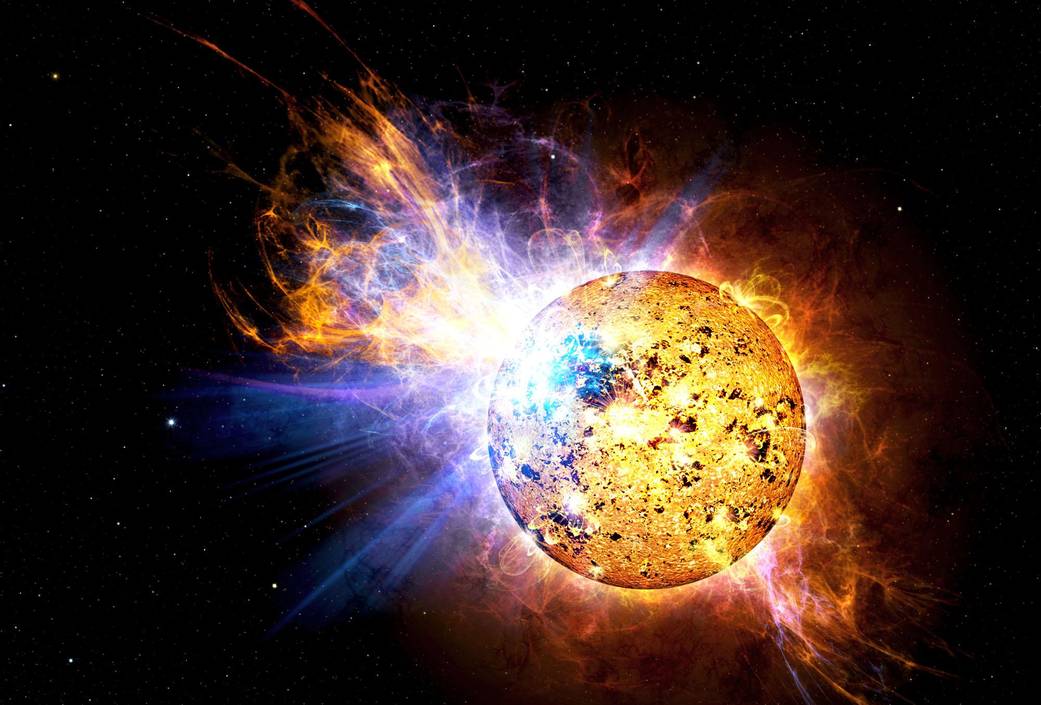For many years scientists have known that our sun gives off powerful explosions, known as flares, that contain millions of times more energy than atomic bombs.
But when astronomers compare flares from the sun to flares on other stars, the sun’s flares lose. On April 25, 2008, NASA’s Swift satellite picked up a record-setting flare from a star known as EV Lacertae. This flare was thousands of times more powerful than the greatest observed solar flare. But because EV Lacertae is much farther from Earth than the sun, the flare did not appear as bright as a solar flare. Still, it was the brightest flare ever seen from a star other than the sun.
What makes the flare particularly interesting is the star. EV Lacertae is much smaller and dimmer than our sun. In other words, a tiny, wimpy star is capable of packing a very powerful punch.
How can such a small star produce such a powerful flare? The answer can be found in EV Lacertae’s youth. Whereas our sun is a middle-aged star, EV Lacertae is a toddler. The star is much younger than our sun, and is still spinning rapidly. The fast spin, together with its churning interior, whips up gases to produce a magnetic field that is much more powerful than the sun’s magnetic field.Image Credit: Casey Reed/NASA
2 min read



























